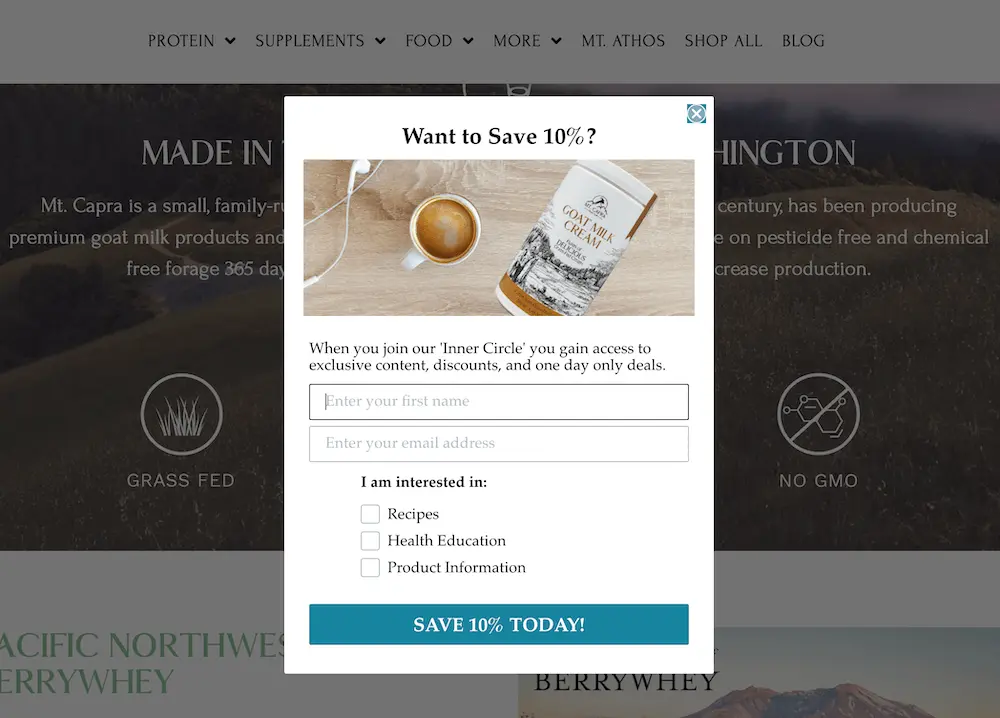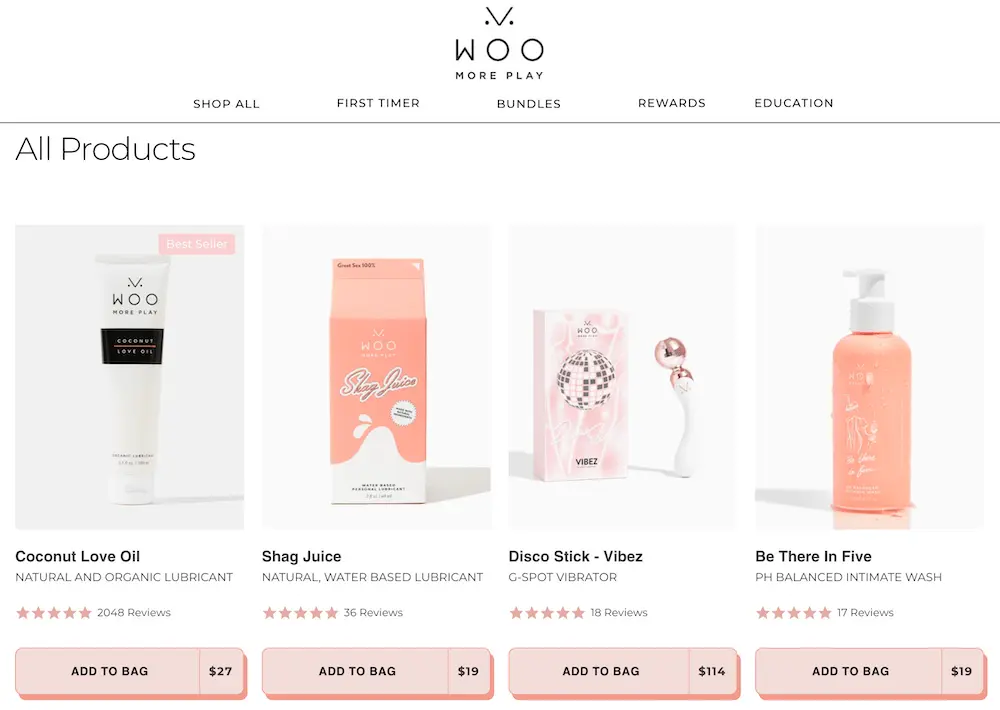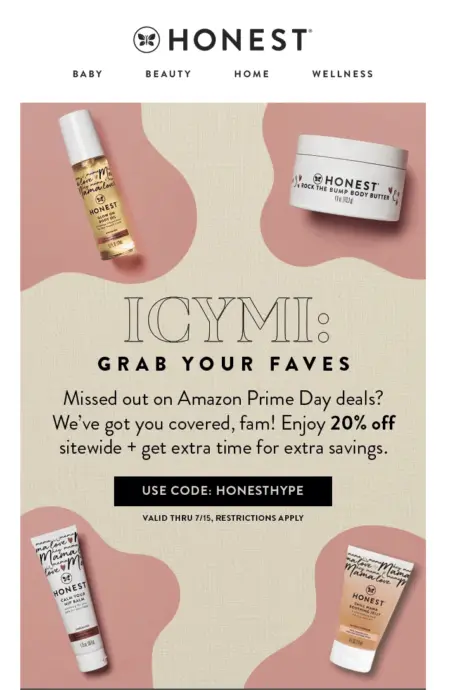How to create Prime Day marketing momentum—without Amazon
Christmas in July isn’t a new concept.
But Amazon reinvented it in 2015 when they celebrated the company’s 20th birthday by launching Amazon Prime Day—the two-day shopping holiday that offers deep discounts and deals to Prime members.
In 2023, Amazon Prime Day saw its most successful year yet, generating $12.7B in sales over both days of the event in the US. That’s a 6.4% increase from 2022—notable even with inflation at 3.4% for 2023.
With over 200M Prime members and an even larger non-member audience, Amazon can help brands not only increase discoverability of their products through its marketplace, but also benefit from two-day shipping through Fulfillment by Amazon (FBA).
But this access comes at a hefty price in the form of monthly subscription, referral, closing, and order fulfillment fees. And the biggest price brands pay to sell on Amazon is the lack of data and missed opportunities to create long-lasting connections with customers.
Many forward-thinking marketers know they can’t pin their hopes for sustainable growth on Amazon alone. Third-party platforms can change their rules and algorithms with no notice, leaving brands with little control over how, or even if, their products are displayed to potential customers.
That’s why so many merchants are taking ownership of their growth by relying on the channels that are directly within their control—like email, SMS, and mobile push—to deliver highly personalized and compelling customer experiences.
Here, we’ve collected 6 stories from real-life brands that have had unique experiences with Amazon—whether that means using Amazon as a distribution and discovery tool, deciding the channel isn’t the right fit for their business, or coming up with creative Amazon Prime Day marketing strategies.
3 real-life brands that adjusted their Amazon strategies
Marketers who do decide to sell on Amazon must go into it with a channel-specific strategy, while also maintaining a strong DTC presence. Just ask the marketers behind the brands that’ve done it successfully.
1. Beardbrand focuses on building their brand off Amazon
Beardbrand, a men’s grooming company, initially used a third party to sell their products on Amazon. It worked well, and the brand thought about bringing that function in-house so they could invest more into selling on Amazon.
But when their products sold out on Amazon, Beardbrand noticed an unanticipated surge of sales on their ecommerce site.
“Why bother managing two different channels when we could just focus on one and make it really good?” says founder Eric Bandholz of their decision to change their sales channel strategy.
Why bother managing two different channels when we could just focus on one and make it really good?
After realizing that Beardbrand didn’t have to rely on Amazon for sales, Bandholz ultimately decided to take the brand off the platform completely. They haven’t looked back.
“We exited Amazon in January of 2018, and it’s been great. I go to bed with no worries that someone’s going to shut down our listings or that we’ll have to deal with fake reviews—all the things that Amazon sellers are familiar with,” Bandholz explains.

“That said, I don’t think it’s the right move for everyone,” Bandholz cautions. “If you have most of your business coming in through Amazon, you can’t kill it. But because we invested so much in content marketing and brand, we were able to do that.”
2. Mt. Capra learns the dangers of relying on third parties
Mt. Capra, a family-owned brand that makes premium goat milk products, has been in business since the late 1920s. They sell their products on a DTC website and Amazon, but they’ve found the latter to be challenging.
“We had our sales almost cut in half over the course of about a month simply because Amazon misunderstood 3 of our top listings,” says Joe Stout, president of Mt. Capra. “They said we were advertising it in a way that was against their terms of service, but it wasn’t. It took a month and a half to get them to turn it back on, and by then, the sales never recovered.”
You have to build your own customer list. You have to own the relationship with your customers.
“What that showed us is that you have to build your own customer list. You have to own the relationship with your customers,” Stout adds.
Since then, the team at Mt. Capra has focused on building their audience, smart segmentation, and creating personalized marketing experiences to drive growth.

3. Woo More Play diversifies beyond Amazon for their “taboo” product
When Woo More Play, a sexual wellness brand, realized Amazon presents limitations for brands selling “taboo” items, they were forced to market their products as something else entirely in order to meet merchant guidelines.
While the Woo More Play team still sells through Amazon, founder and creative director Westin Mitchell emphasizes that it’s important for brands not to rely on the mega marketplace for all of their sales and marketing.
If you’re dependent on selling through a third-party platform like Amazon, you don’t know who your customer is.
“It’s a long-term strategy—you don’t want to have all your eggs in one basket, especially with a platform like Amazon, which doesn’t share its customer data,” Mitchell explains.
“If you’re dependent on selling through a third-party platform like Amazon, you don’t know who your customer is. When you sell DTC, you’re able to dive into a lot more intricate data and analytics and see really who your audience is, who your customer is, and reach out and solve problems to make their lives better,” Mitchell adds.

3 real-life Amazon Prime Day marketing examples
Whether or not you choose to sell on Amazon, you can still take advantage of the Prime Day shopping extravaganza. Consumers’ wallets are already out—why not try to sway their purchase power in your direction?
1. HONEST extends Prime Day themselves for more direct sales
One day after Amazon Prime Day, The Honest Company sent this email offering 20% off if readers ordered directly from their site.

It’s a smart move—not only because the timeline of their sale is longer than Amazon’s, but also because they’re offering a big discount. If subscribers miss buying Honest products through Prime Day, they get a second chance directly from the brand’s site.
This is a win-win: the customer still gets the discount, and the brand gets to collect data they wouldn’t otherwise on Amazon—not to mention, keep more of the profit from the sale.
2. CROSSNET capitalizes on Prime keywords
When consumers are scanning their emails for Prime Day deals, they’re typically looking for the word “Prime.” In this email, CROSSNET strategically incorporates the word into their own subject line: “You know, you are a PRIME customer.”

The brand then takes the opportunity to present a free shipping offer to all their subscribers—regardless of whether they’re Amazon Prime Members or not. The discount code is “PRIME,” an homage to the ecommerce holiday.
And the cherry on top? Customers are shopping on their DTC website, so CROSSNET isn’t giving up a percentage of sales to Amazon.
With this email campaign, CROSSNET presents a simple way to make the most of Prime Day—without directing shoppers to Amazon to purchase.
3. TONIC encourages consumers to shop small
CBD brand TONIC sent out this cheeky email around Prime Day, with the subject line “The savings live on! But not for long.”

Here, TONIC nods to Jeff Bezos and the summer shopping event while also encouraging readers to celebrate “Vibe Day” instead. It’s a clever interpretation of Prime Day as an opportunity to encourage consumers to shop small—and save big—by buying from small businesses instead of billionaires.
“Giving your customers a reason to be loyal to your brand is so important if you’re a small business because the cost to keep a customer is going to be a lot less than the cost to gain a new one,” says Brittany Carbone, founder of TONIC.
This Prime Day, take a leaf out of TONIC’s book and tap into consumers’ desire to shop small. Your DTC website is an opportunity to create an offer they can’t refuse—and what Bezos doesn’t know won’t hurt him.
Related content
- 12 Father’s Day marketing examples to inspire your next campaign
- 15 lessons to help you ace your back-to-school email marketing campaigns
- Getting started with Amazon Buy with Prime

